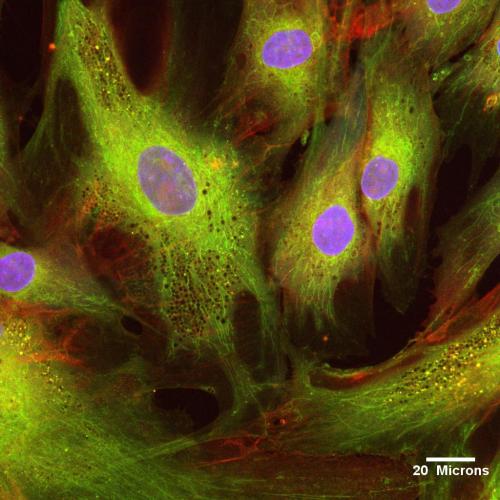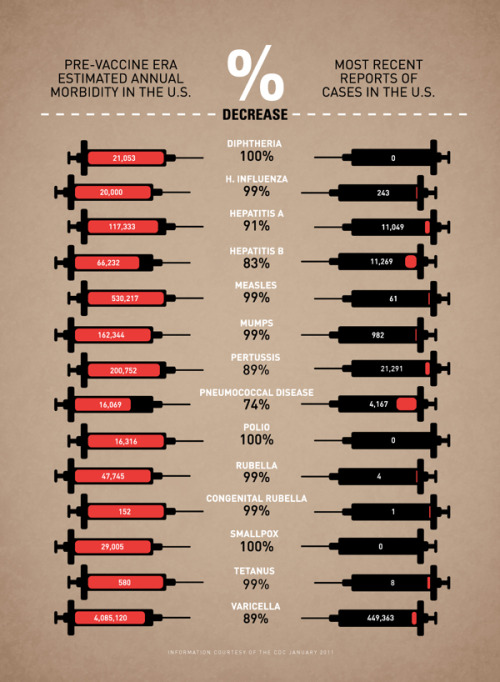An assortment of scientific things from the wonderful world of biology
77 posts
Latest Posts by thejoyofscience - Page 2
That wasn’t a game of thrones episode that was a live action fanfiction









I’ll be dead before the day is done (x)


Went out to a vernal pool today and saw some crazy toad action

Thunderstorm from space
This photo was taken from the International Space Station during a project to capture photos of clouds. Here a large anvil supercell (some 200 km across) is silhouetted against the limb of our blue orb, revealing clearly the layers of the atmosphere somewhere over northern Australia around 1,500 km from the station, which was then flying over Papua New Guinea.
Keep reading
WHY you shouldn’t feed these 10 foods to your dog
Dogs might think they’re human, but their physiology is not like ours. Humans might eat a wide variety of foods with little concern, but there are some very common human foods which you should not feed to your canine companion. You’ve probably seen the foods on this list before, but this is WHY these foods should not be fed to dogs.

Chocolate, Theobromine and Caffeine:
Everybody’s heard that chocolate is bad for dogs, and it’s true. Chocolate contains a compound called Theobromine. Theobromine is a type of compound called a methylxanthine, and another methylxanthine you might be more familiar with is caffeine. We know quite a lot about these compounds, as humans use them both medicinally and recreationally. The long version is that they all inhibit phosphodiesterase and antagonise adenosine receptors. The short version is that they increase muscle activity, including the heart, and stimulate the central nervous system.
This presents as dogs that have fast and irregular heart rates, high body temperatures and increased muscle activity that can progress to seizures.
It takes a reasonable amount of chocolate to poison a dog. One M&M isn’t going to do it. For a 35kg dog it’s going to take at least 3500mg of theobromine, which is about 5kg of typical milk chocolate. But only 1.2kg of dark chocolate or 600g of cooking chocolate, which is possible.
A 10kg dog needs much less. 1.5kg of milk chocolate would do it, which is only about 3 large Easter Bunnies, or 300g of dark chocolate, which is one packet from the cooking isle.
Chocolate is super tasty, dogs will absolutely gorge themselves on all chocolate available, so it’s not too difficult to poison smaller dogs with it.
And even if you get the dog through the toxicity, the high fat content of chocolate can go on to cause other gastrointestinal problems.

Onions & Garlic:
Yes, I said onions AND garlic. All allium species contain the same potentially toxic compounds, whether raw or cooked. That goes for spring onions too, it’s just really difficult to convince a dog to eat enough of them to be poisoned. These plants cause a Heinz body anaemia by inducing oxidative damage to the surface of the red blood cells, and for some reason breeds of Japanese origin like the Akita and Shiba Inu seem particularly prone to this toxicity.
It usually takes 10 to 15g per kg of body weight to poison a dog, but those breeds can be affected by as little as 5g per kilo. So for a big, 35kg dog, that’s about three medium sized onions.
Poisoning can happen all in one go, or it can happen by eating small amounts over a longer period of time, which is why it’s infuriating to see garlic being suggested as a natural remedy for things.
Bad cases will have to be treated with a blood transfusion as there is no direct antidote. And for interest, there are other things that can cause Heinz body anaemia too, like zinc.
Keep reading

About to burst
A geyser forms due to water being heated by the energy beneath the Earth’s surface. The water is heated past the normal boiling point of water, but remains in a liquid state because of the pressure of the water on top of it.
Eventually, enough water turns to steam that it begins blasting the column of water upwards. Once the first bit of water is removed, the pressure drops, causing more water to turn to steam and leading to a runaway eruption of the water.
Keep reading

Kim Weaver (b. 1964) is an astrophysics professor and astronomer. She is an expert in x-ray astronomy and has worked for NASA’s Goddard Space Flight Center.
She obtained her PhD in astronomy in 1993 from the University of Maryland. After that, she was a research scientist at Penn State and John Hopkins University. Her honours include the Presidential Early Career Award and the NASA Peer Award.





“our work should equip the next generation of women to outdo us in every field this is the legacy we’ll leave.”
- rupi kaur
panic! at the lab
ft hit songs such as
i write scribbles not lab reports
nine in the afternoon (nine in the evening? morning?) (oh it’s a 12 hr time point)
mad as grad students
high hopes (dissertation version)
Sanity check
Hi everyone, I overheard a very troubling conversation between a neighboring grad student and my PI. In this conversation, the neighboring grad student said the following:
She has no work-life balance. Most of the times, she comes in very early in the morning (before 7 or 8 AM) and leaves very late (after 10 PM).
She says she’s fine with this but also says she’s under constant state of stress because of her PI’s expectations, and my labmate and I have actually ran into her crying in the stairwell.
She’s actually concerned about her peers when they can relax in the evenings instead of being in lab or at least working from home, or when they get to do things on the weekends.
I just want to see how other PhD students are handling their work-life balance after hearing this conversation just to make sure I’m not slacking off.
For me, I come in 9 AM - 5 PM (sometimes staying later depending on experiments, but this is NOT the norm). Sometimes, I come in for a few hours on the weekends to speed things up or if need be (also not the norm). After dinner, I usually do homework, prepare powerpoints for journal clubs or seminar presentations and other non-lab related things, but sometimes I do some work (interneuron quantifying, schedule and plan experiments for the next day/week, etc). I do want to incorporate more literature reading in the evenings or mornings. Regardless, the majority of my work is done on the weekdays 9 AM - 5 PM.
My reasoning is that I’d rather go “normal” pace and steady since I’ll be here for 3+ years to avoid burning out. I want to enjoy my work, and that’s not happening if I feel like I NEED to be here and NEED to do all these things on this impossible schedule. I have been having thoughts of mastering out in the back of my mind, but at the end of the day, I do enjoy my work and my PI’s mentorship and I think I can learn a lot more being here for 3+ years of my PhD.
In addition, we get paid barely above minimum wage as a grad student if we work 40 hours a week. During crazy weeks (which everyone has), that increases by a lot, which means we get paid less than minimum wage, for very specialized and skilled works. Yes, we are in training as PhD students, but if the expectation is for us to work all day, all night, all week, then the PhD feels less like training and more like slave labor disguised as training.
How are your schedules like as PhD students? @cancerbiophd @queenofthebench @whitecoatjourney @adorable-amygdala and many others!

Hematopoietic stem cells ready for re-injection. Image from Steve Gschmeisserner.
my PI when she reads my writing

my PI when she listens to me talk

my PI

underappreciated form of humor: using incorrect long forms of proper names i.e. Craigory, Bobert, Barold, etc.

(Image: U. Müeller)
New neurons (in green) are guided to the neocortex - responsible for controlling language and movement - not by glial cells, but by a protein called reelin.
Journal reference: Neuron, DOI: 10.1016/j.neuron.2011.01.003

Steering Stem Cells with Magnets
Magnets could be a tool for directing stem cells’ healing powers to treat conditions such as heart disease or vascular disease.
By feeding stem cells tiny particles made of iron oxide, scientists at Emory and Georgia Tech can use magnets to attract the cells to a particular location in the body after intravenous injection.
The results are published online in the journal Small and will appear in an upcoming issue.
Human Adipose Derived Mesenchymal Stem Cells
More…

The central nervous system (CNS) in most vertebrates forms initially as a flat sheet of cells, which subsequently rolls up and fuses shut to form the hollow neural tube, which is the precursor to the CNS. The enriched apical actin in the closing neural tube (shown in green in the image) is central to cell shape changes that contribute to the rolling up process.
Image: Color micrograph showing a cross-sectional (transverse) view of the closing neural tube in a Xenopus embryo. Actin is shown in green.

Ms. Holly Aaron, Dr. Karen Dehnert, Dr. Scott Laughlin, and Dr. Carolyn Bertozzi
University of California, Berkeley, California, USA Specimen: Fucosylated glycans in a zebrafish embryo. Technique: Confocal microscopy







Amazing Annual Monarch Butterfly Migrations
Monarch butterflies in other countries also migrate with the season, but it’s those in North America that travel the greatest distance. Each year, there are two major Monarch Butterfly migrations in North America. Those monarchs that live east of the Rocky Mountains fly down to Mexico, while the more western population stops in California. Monarchs do not like the cold, and as soon as things start to get a little chilly up north, they take off south (and west) for warmer climates.
The largest group travels over 1,250 miles from the Rocky Mountains to spend the winter in Michoacán, Mexico. The government of Mexico has managed to almost stamp out logging in the monarch’s wintering areas, a practice which once threatened the migrating insects. Working with environmental organizations and individuals, they have been encouraging communities to start eco-tourism enterprises by planting trees for the butterflies to nest. The monarch is a butterfly ruled by the sun. When the autumn sun reaches fifty two degrees above the horizon, the monarch reproduction cycle shuts down, and their great migration begins. When they begin their flight down to Mexico, they have never been there, yet every generation is able to find the exact same spot year after year where their previous ancestors spent the winter.
The second group travels from Ontario, Canado to spend their winters in Santa Cruz, California. You may wonder why the monarchs don’t simply stay and enjoy the warmer weather there year round. That’s because they need the milkweed plants on which their larvae feed, and those are more plentiful up north. So as soon as the weather starts to warm up, that’s where they return every year. Interestingly, not every generation of monarchs migrate. Some simply remain in their breeding ground. Those that do migrate are born at the end of summer or early autumn. Because of their trip to warmer climes, this special generation will outlive several younger generations that stay put. It will then be the migratory monarchs’ great grandchildren that follow the beat of their forebears’ wings.
in Ontario, Canada, in their summer home. It’s thought that the distinctive bright coloring of the monarchs acts as a warning to predators to stay away. Monarch butterflies are also poisonous and will make any animal that tries to eat them sick – hopefully sick enough not to try snacking on them a second time! The poison comes from the milkweed that they eat while they are caterpillars. This doesn’t always work, however. Certain bird species, for example, have learned that some parts of the butterflies are not as toxic, while other predators are resistant or immune to the poison altogether.
source

Connective tissue
Anne Weston, London Research Institute, Cancer Research UK
This false-coloured scanning electron micrograph shows connective tissue removed from a human knee during arthroscopic surgery. Individual fibres of collagen can be distinguished and have been highlighted by the creator using a variety of colours. The horizontal field width of the image is 16 microns.
For decades, scientists have been capitalizing off discoveries made from Henrietta Lacks’ family’s cells. That may change.

Thumbs Up For Science
The cover of the legendary journal Nature from February 1879, featuring this thumb microscope, yours for the low, low price of three pounds.
(via Ptak Science Books, which you should really check out)

Vaccine Infographic by Leon Farrant.
I often speak with patients who tell me that they do not wish to be vaccinated because they do not see the point, that it is a farce, that it can cause autism (it does not), despite educating and informing them of the reasons behind it.
In the same way that people who did not grow up during the great wars of the mid-twentieth century have little frame of reference as to what the toll of total war can be, neither can a newer generation of people who have never seen the effects of polio, smallpox, and measles ravage humanity. For many people in the developed world, these are just distant, faded memories captured in the pages of medical textbooks.
I sincerely hope that the understanding of why we vaccinate does not become lost over time, that people need not fall victim to these preventable diseases; otherwise, the suffering, the challenges, and the research that went into developing these vaccines were all for nothing.
Contest Entries: Hypatia of Alexandria

My favorite Female Scientist by Drziggystardust
Mathematician, philosopher, astronomer- Mostly known for her work in mathematics because she is the first well documented woman in the field. Her life and work were so important that many scholars agree that her brutal murder by religious zealots marks the end of the Classical Antiquity era, at the very least her death marked the downfall of intellectual life in Alexandria.








